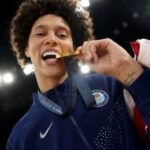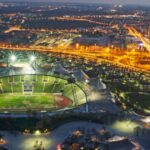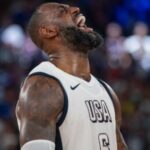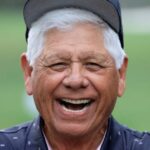Shooting sports have been a staple in the Olympic Games for over a century. As a sport that demands precision, concentration, and skill, it’s no wonder that the type of equipment used, including the caliber of ammunition, plays a crucial role. For enthusiasts and budding athletes alike, understanding the calibers used in Olympic shooting can provide valuable insights into the sport. Let’s delve into the specifics and explore the various calibers used in different Olympic shooting events.
Table of Contents
ToggleUnderstanding Calibers in Shooting Sports
Before we get into the nitty-gritty of Olympic shooting calibers, let’s clarify what “caliber” means. Caliber refers to the internal diameter of a gun barrel and, consequently, the diameter of the bullet that is fired from it. In simpler terms, it’s the size of the bullet. The choice of caliber affects various aspects of shooting, including accuracy, recoil, and the overall feel of the gun.
History of Shooting Sports in the Olympics
Shooting sports made their Olympic debut in 1896, at the very first modern Olympic Games in Athens. Since then, the sport has evolved significantly, not only in terms of the events included but also in the technology and calibers used.
Early competitions featured large-caliber firearms, but over time, there has been a shift towards smaller, more precise calibers, reflecting advancements in firearm technology and a focus on accuracy and safety.

Types of Shooting Events in the Olympics
There are three primary categories of shooting events in the Olympics: rifle, pistol, and shotgun. Each category has its own set of disciplines, and the calibers used can vary widely between them.
Rifle Events
Rifle events test shooters’ precision over various distances. The main categories include:
- 10m Air Rifle
- 50m Rifle Three Positions
- 50m Rifle Prone
Pistol Events
Pistol events focus on accuracy and control in shooting at stationary targets. The main categories include:
- 10m Air Pistol
- 25m Pistol
- 25m Rapid Fire Pistol
Shotgun Events
Shotgun events involve shooting at moving targets, such as clay pigeons. The main categories include:
- Trap
- Skeet
Common Calibers Used in Olympic Rifle Events
.22 Long Rifle (.22 LR)
The .22 LR caliber is perhaps the most iconic in Olympic shooting, particularly in rifle events. Known for its minimal recoil and high precision, this caliber is a favorite among competitors. It is used in events such as the 50m Rifle Three Positions and the 50m Rifle Prone.
The .22 LR cartridge is a rimfire type, meaning the firing pin strikes the rim of the cartridge base to ignite the primer.
Air Rifle Calibers
For 10m Air Rifle events, shooters use rifles that fire 4.5mm (.177) pellets. These are not traditional bullets but small, precisely manufactured pellets designed for accuracy. Air rifles are powered by compressed air or CO2, providing a consistent and reliable shooting experience.
Common Calibers Used in Olympic Pistol Events
.22 Long Rifle (.22 LR)
Similar to rifle events, the .22 LR is also prevalent in pistol competitions, especially in events like the 25m Pistol and the 25m Rapid Fire Pistol. Its low recoil makes it easier for shooters to maintain control and accuracy.
Air Pistol Calibers
In 10m Air Pistol events, competitors use pistols that shoot 4.5mm (.177) pellets, akin to air rifles. These air pistols are highly specialized and designed to provide a steady and precise shooting experience, essential for hitting small targets at a distance.
Common Calibers Used in Olympic Shotgun Events
12 Gauge Shotgun
Shotgun events in the Olympics, such as Trap and Skeet, utilize 12 gauge shotguns. Unlike rifle and pistol events, shotgun events involve shooting at moving targets, requiring a different skill set and equipment. The 12 gauge is chosen for its versatility and effectiveness in hitting fast-moving targets at varying distances.
Regulations and Rules on Calibers in the Olympics
The International Shooting Sport Federation (ISSF) sets strict regulations on the types of firearms and calibers allowed in Olympic events.
For instance, specific calibers are mandated for each event category to ensure fairness and safety. Shooters must adhere to these rules, including the weight, length, and type of ammunition used.

Why .22 LR and 4.5mm Calibers are Popular in the Olympics
The popularity of the .22 LR and 4.5mm calibers in the Olympics can be attributed to several factors:
- Accuracy and Precision: These calibers offer minimal recoil, allowing shooters to maintain high accuracy.
- Cost-Effectiveness: Ammunition for these calibers is relatively inexpensive, making them accessible for training and competition.
- Safety Considerations: Smaller calibers are generally safer and easier to handle, reducing the risk of accidents.
The Role of Ammunition in Performance
The quality of ammunition can significantly impact a shooter’s performance. Consistency in manufacturing ensures that each shot behaves similarly, which is crucial in a sport where even minor deviations can affect the outcome. Shooters often test various brands and types of ammunition to find the best match for their equipment and shooting style.
Training and Equipment for Olympic Shooters
Training for Olympic shooting is rigorous and requires a high level of discipline. Athletes often train for years, honing their skills in precision, control, and mental focus.
Click to read about Field Hockey balls.
Customization of equipment, including the fine-tuning of firearms and the choice of ammunition, is a crucial aspect of an athlete’s preparation. Many shooters work closely with gunsmiths and coaches to optimize their gear for peak performance.
Famous Olympic Shooters and Their Preferred Calibers
Over the years, many Olympic shooters have made their mark with their preferred calibers. For example, American shooter Matthew Emmons has excelled with the .22 LR in rifle events, while Jin Jong-oh from South Korea has dominated with the .177 caliber in air pistol events. These athletes’ success stories often inspire the next generation of shooters.
Future Trends in Olympic Shooting Calibers
As technology advances, so does the potential for changes in Olympic shooting calibers. Innovations in firearm materials, ammunition design, and shooting techniques could lead to the introduction of new calibers or modifications to existing ones. Additionally, evolving regulations may impact the types of calibers allowed in future competitions.
Conclusion
Understanding the calibers used in Olympic shooting provides valuable insights into the sport’s technical aspects and the athletes.
FAQ’s
What caliber is used in the Olympic shooting?
In Olympic shooting, the most commonly used calibers are the .22 Long Rifle (.22 LR) and 4.5mm (.177) pellets. The .22 LR is used in rifle events such as the 50m Rifle Three Positions and pistol events like the 25m Pistol, while the 4.5mm (.177) caliber is employed in air rifle and air pistol competitions, including the 10m Air Rifle and 10m Air Pistol events. For shotgun events like Trap and Skeet, athletes use 12-gauge shotguns to hit moving targets.
What kind of 22 is used in the Olympics?
In the Olympics, the type of .22 used is the .22 Long Rifle (.22 LR). This caliber is employed in various shooting events, including the 50m Rifle Three Positions and 50m Rifle Prone for rifle events, as well as the 25m Pistol and 25m Rapid Fire Pistol for pistol events. The .22 LR is favored for its accuracy, minimal recoil, and consistent performance.
What do they shoot at the Olympics?
In the Olympics, athletes shoot at a variety of targets depending on the discipline. In rifle events, such as the 50m Rifle Three Positions and 10m Air Rifle, they aim at stationary targets with precision at different distances.
In pistol events, including the 25m Pistol and 10m Air Pistol, competitors shoot at fixed targets from various distances. In shotgun events, like Trap and Skeet, shooters aim at moving clay pigeons launched into the air. The targets are designed to test different shooting skills, including accuracy, speed, and precision.
What air guns are used in the Olympics?
In the Olympics, air guns used are typically precision-engineered for specific events. These include:
- Air Rifles: For events like the 10m Air Rifle, competitors use rifles that shoot 4.5mm (.177) pellets. These rifles are designed for extreme accuracy and are powered by compressed air or CO2.
- Air Pistols: Used in the 10m Air Pistol event, these pistols also shoot 4.5mm (.177) pellets. They are similarly powered by compressed air or CO2 and are designed for precise shooting at close range.
Both types of air guns are highly specialized to ensure consistent performance and accuracy during competitions.







